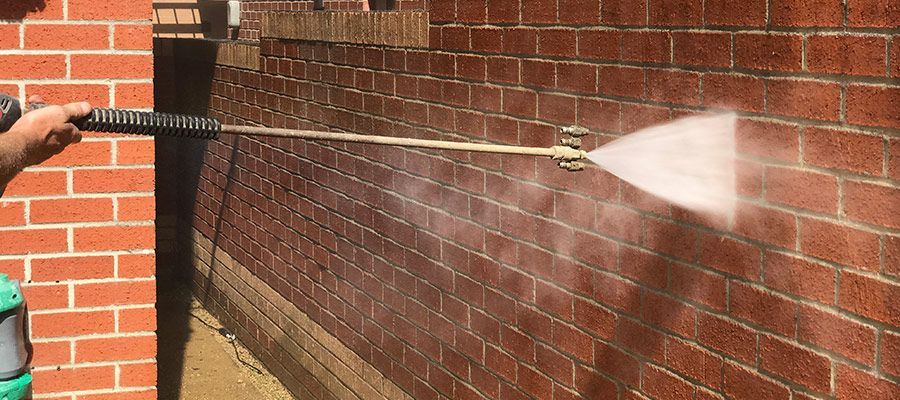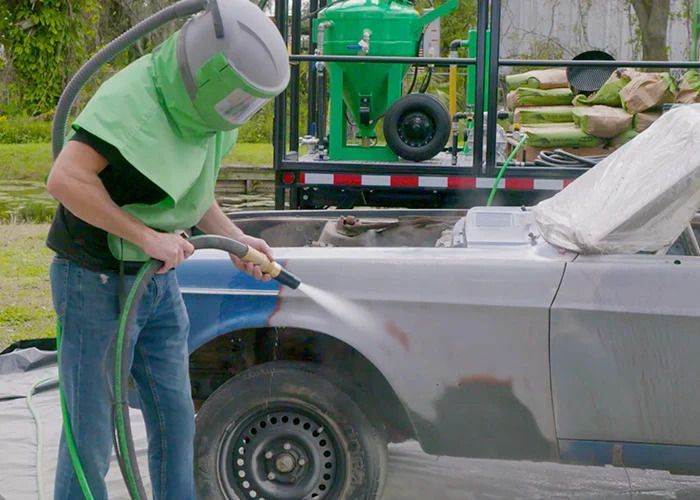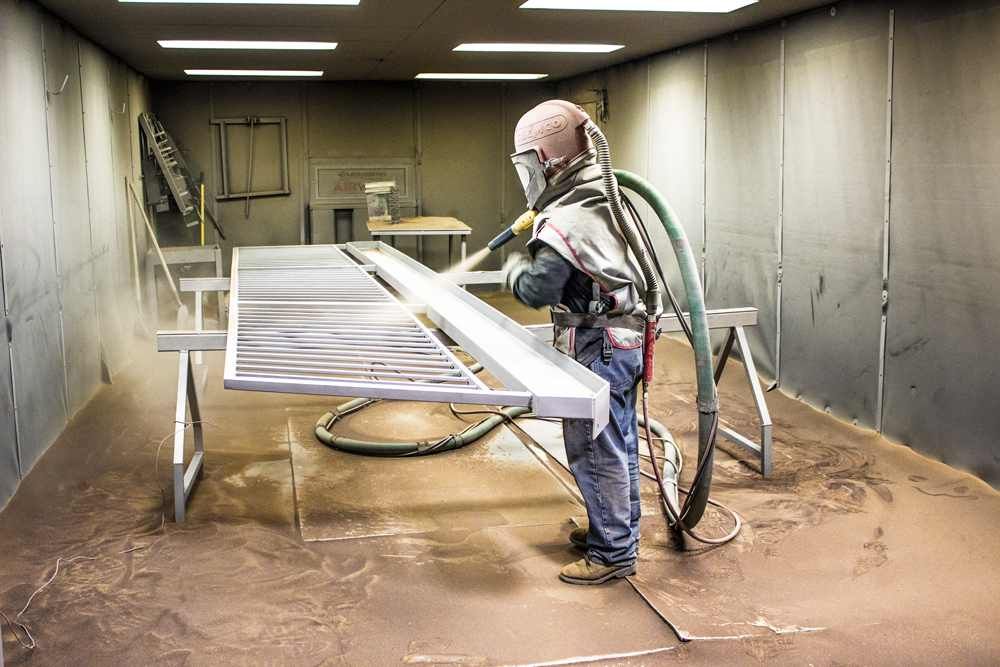Applications and Techniques of Sandblasting in Art and Sculpture
Sandblasting, traditionally associated with industrial applications, has carved out a significant niche in art and sculpture. This technique, which involves blasting an abrasive material at a surface to shape or clean it, has been embraced by artists and sculptors for its precision and versatility. In this blog post, we will explore the creative applications and techniques of sandblasting in the art world, offering insights into how this powerful tool can be harnessed to create stunning works of art.
The Basics of Sandblasting
Sandblasting involves propelling fine particles, such as sand, glass beads, or other abrasives, at high speeds onto a surface. This process is typically used to clean, etch, or shape materials. In art and sculpture, sandblasting allows for intricate detailing and texturing, making it an invaluable technique for artists looking to achieve specific effects that cannot be accomplished with traditional tools.
Historical Background
While sandblasting has industrial roots dating back to the late 19th century, its adoption in art began more recently. Artists and sculptors began to see the potential of sandblasting for creating detailed textures and patterns on various materials, such as glass, stone, metal, and wood. This transition marked a significant shift, demonstrating how industrial techniques can be adapted for creative purposes.
Creative Applications in Art
1. Glass Etching and Frosting
One of the most popular uses of abrasive blasting in art is glass etching. Artists use sandblasting to etch intricate designs into glass surfaces, creating frosted or textured effects. This technique allows for precise control over the depth and texture of the etching, resulting in beautiful, detailed patterns that catch the light in unique ways.
2. Stone Sculpting
Sandblasting is also widely used in stone sculpting. It enables artists to carve intricate designs and shapes into stone surfaces with a level of precision that is difficult to achieve with traditional chiselling tools. The abrasive action of sandblasting can create smooth and rough textures, adding depth and dimension to stone sculptures.
3. Metal Artwork
Artists working with metals can use sandblasting to clean surfaces, remove rust, and create textured finishes. This technique is beneficial for creating metal sculptures and installations that require a high level of detail and finish. Sandblasting can also be used to prepare metal surfaces for painting or coating, ensuring a smooth and even application.
4. Wood Texturing
In woodwork, sandblasting can be used to create unique textures and patterns. By selectively blasting areas of the wood, artists can create various effects, from rough, rustic surfaces to smooth, polished finishes. This technique adds a tactile quality to wooden artworks, making them more engaging to the viewer.
Techniques and Tools
1. Selecting the Right Abrasive
The choice of abrasive material is crucial in sandblasting. Different abrasives produce different effects, and artists must select the right one for their specific project. Common abrasives include silica sand, aluminium oxide, glass beads, and walnut shells, each offering unique properties and results.
2. Controlling Pressure and Distance
The pressure at which the abrasive is propelled, and the distance from the surface play a significant role in the outcome. Higher pressures and closer distances result in deeper, more aggressive etching, while lower pressures and greater distances produce softer, more subtle effects. Mastering these variables allows artists to achieve the desired finish.
3. Stencilling and Masking
To create detailed designs, artists often use stencils and masks to protect certain areas of the surface from the abrasive. This technique enables the creation of intricate patterns and images, as only the exposed areas are etched or textured by the sandblasting process.
4. Layering Techniques
Abrasive sandblasting can be combined with other techniques, such as painting or engraving, to add layers of detail and complexity to a piece. By alternating between sandblasting and other methods, artists can build up rich textures and visual interest in their work.
Benefits of Sandblasting in Art
1. Precision and Detail
Sandblasting allows for an unparalleled level of precision and detail. Artists can achieve fine lines and intricate patterns that would be difficult or impossible to create with traditional tools. This precision opens up new possibilities for creative expression and innovation.
2. Versatility
The versatility of grit blasting makes it suitable for a wide range of materials and applications. Whether working with glass, stone, metal, or wood, artists can use sandblasting to achieve various effects and finishes. This adaptability makes it a valuable technique in the artist's toolkit.
3. Efficiency
Sandblasting is an efficient method for shaping and texturing surfaces. It can quickly remove material and create detailed patterns, saving artists time and effort compared to manual techniques. This efficiency allows artists to focus more on the creative aspects of their work.
4. Durability
The surfaces treated with sandblasting are often more durable and resistant to wear and tear. This durability ensures that the artwork maintains its appearance and integrity over time, making sandblasted pieces ideal for indoor and outdoor installations.
Sandblasting has become an essential technique in art and sculpture, offering artists a powerful tool for creating detailed, textured, and durable works. From glass etching to stone sculpting, the creative applications of sandblasting are vast and varied. By mastering the techniques and understanding the tools involved, artists can push the boundaries of their work and achieve stunning results.
For those looking to explore the possibilities of sandblasting in their artistic practice, Sandblasting Specialists should be your first choice. With our expertise and state-of-the-art equipment, we can help you achieve the precision and quality your artwork deserves. Whether you're a seasoned artist or just starting, our team is here to support your creative journey.
Check out our latest GBP update about the applications and techniques of
sandblasting in art and sculpture.
You might also like
Service Areas
Give us a call today!



